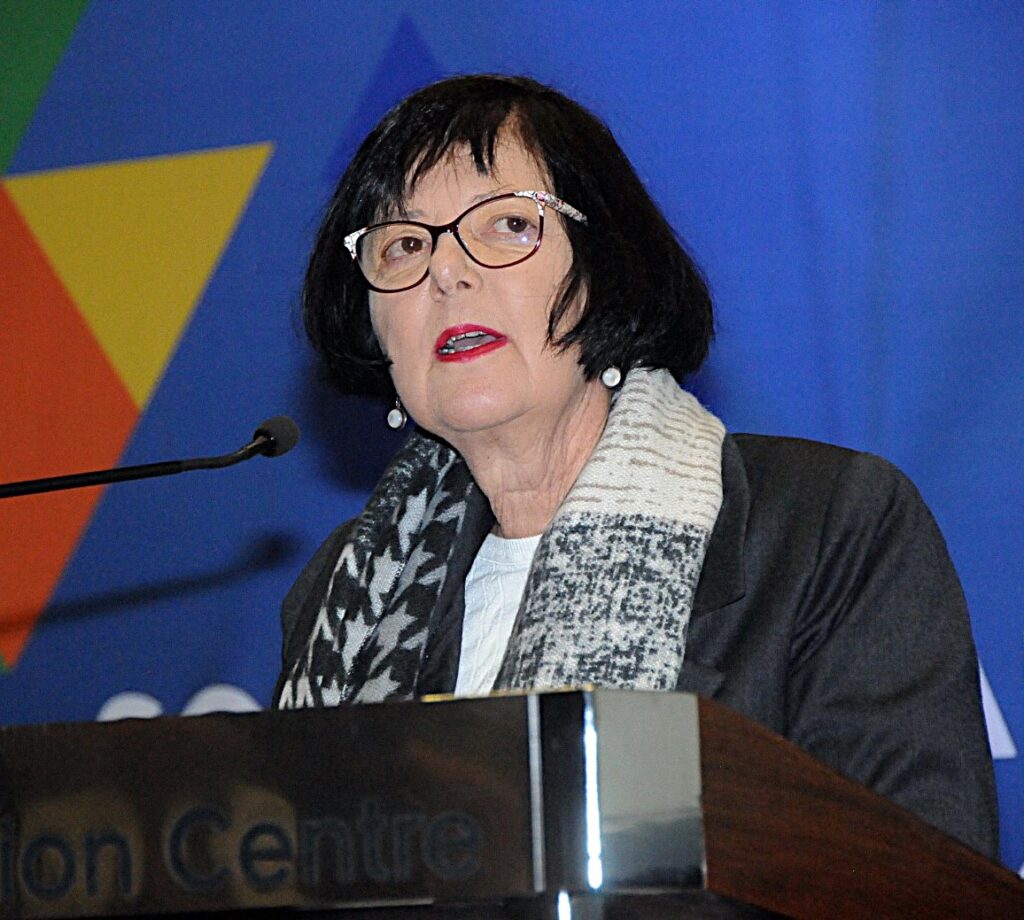Minister of Transport Barbara Creecy didn’t mince her words at the 43rd Annual Southern African Transport Conference (SATC). In her opening address, she laid out a six-point strategy aimed at lifting South Africa’s transport systems out of stagnation into sustainable upward momentum. Spanning roads, rail, ports and planes, Creecy’s message was simple: modernise, integrate, deliver.
“It is a cornerstone for achieving our national objectives of inclusive economic growth, social development and building a capable state,” she told delegates, underlining just how critical transport is to every sector of the economy.
The six targets span road freight, taxis, rail, ports, aviation and road safety – each with concrete deadlines and metrics. However, with the state barely keeping up on core infrastructural maintenance, the success of these objectives will depend heavily on private sector investment.
Leveraging private muscle
For freight, the biggest shift is a renewed push to get 250 million tonnes back onto rail by 2029. With Transnet’s recent dysfunction still fresh in the minds of supply chain professionals, Creecy’s call for investment resonates sharply. “To guide private sector investment in our five priority rail and port corridors, we have just concluded a Request for Information process,” she said.
Requests for Proposals go live at the end of August 2025, backed by a newly established Private Sector Participation Unit housed at the Development Bank of Southern Africa (DBSA).
Ports will be judged against a 30 gross crane moves per hour benchmark. “We need to achieve this standard to remain globally competitive,” Creecy warned. Faster ship turnarounds mean better fleet efficiency – especially for time-sensitive goods – and the goal will force attention on both port infrastructure and labour productivity.
Passenger rail, meanwhile, is clawing its way back. “By the end of May 2025, PRASA reopened 35 out of 40 passenger corridors nationwide. Passenger journeys are expected to rise from 77 million in the last financial year to 116 million in the 2025/26 financial year,” Creecy said. Her goal is 600 million passenger trips by 2030 – a major leap that hinges on service reliability and public confidence.
On aviation, Creecy’s targets are no less ambitious – 42 million passengers annually through ACSA airports by 2029, up significantly from current levels. It’s tied to a R21.7-billion infrastructure investment plan that includes upgraded terminals and a new freight facility at OR Tambo International Airport.
“A recent Oxford Economics Africa study confirms SAA contributed R9.1-billion to South Africa’s GDP in 2023/24, with projections rising to R32.6-billion by 2029/30. The airline is set to support 86 700 jobs by the end of this term, up from 25 000 today,” Creecy added.
Airfreight is also in focus, with a target of 1.2 million tonnes moved annually through ACSA by 2029. That’s key for high-value, time-critical supply chains and will demand serious alignment between airlines, customs, warehousing and ground handling operators.
Spending controlled and road safety improved
Roads, of course, remain a huge concern for logistics operations. While SANRAL has taken over 3 099km of provincial roads, Creecy drew a fiscal line in the sand. “Our priority is to ensure provinces and municipalities spend their existing road budgets effectively,” she said.
A new Memorandum of Understanding with the South African Local Government Association (SALGA) is set to enforce accountability on the Municipal Infrastructure Grant. “Seventeen percent of this grant is intended for road and bridge maintenance, yet too often it is either used for other purposes or returned to the National Treasury unspent,” Creecy said, adding that R94-million has been set aside for technical support to help provincial road departments shape up.
Creecy also reasserted the state’s road safety goals, targeting a 45% cut in road deaths by 2029, aligned with the UN’s 2030 halving target. Progress is visible with a 9% annual drop in fatalities but pedestrian deaths still account for 44% of road deaths, highlighting the social dimensions of mobility failures, she pointed out.
The taxi industry, often excluded from formal logistics discussions but responsible for 85% of commuter trips, was not ignored. “We are working with banks and vehicle manufacturers to de-risk financing and developing a Standard Operating Procedure for issuing operating licences,” she said, suggesting a critical step forward in stabilising a sector that often intersects uneasily with road freight at the street level.
Creecy closed her speech with a call to action: “A fully integrated transport system lies at the heart of any nation’s development. It is the artery through which progress flows, connecting communities, facilitating trade and enabling access to opportunities. Our responsibility – as role players in the transport sector – is immense. We hold the key to unlocking the full potential of our nation’s economy.”
FleetWatch extends its support to Minister Creecy and her department in furthering the interests of road safety, logistics efficiency and indeed, economic Best Practice. After all, beyond a well-drafted political vision, a fully functional national transport system depends on well-funded professionals working in unison across respective modes, 24/7.




